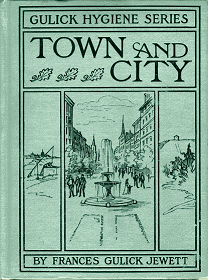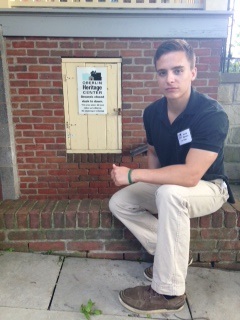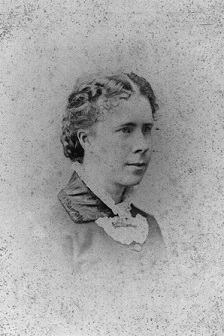New and Old faces
Saturday, July 5th, 2014Greetings history enthusiasts and arbitrary visitors alike! My name is Austin Spenzer and this summer I am interning with the Oberlin Heritage Center through an organization called Leadership Lorain County. This upcoming fall semester I will be a senior at Miami University of Ohio. I grew up near the shores of Lake Erie in the quaint city of Avon Lake. Currently I am working towards two majors: French and Political Science. The Oberlin Heritage Center appealed to me because it deals strongly with the concepts of freedom, social change coupled with political struggle, and equality. By working with the Oberlin Heritage Center, I will be better able to contextualize the current political scene through the understanding of past predicaments and precedents that led to its unfolding. Also, Oberlin in itself is very interesting to analyze and study considering its immense breadth of history! I feel my work here at the Oberlin Heritage Center greatly compliments my own studies by giving me more perspective into History, but also practically I will learn about the inner workings of a small friendly museum organization.
For my first project at the Oberlin Heritage Center, we decided to redo the exhibits in the hallway of the Vineway Building at 82 S. Main. Upon inspecting the area to decide what it was exactly I wanted to display, it came to my attention there was an abundance of trash around the showcase. This made me think: Frances Jewett would likely not approve of this discarded waste!
It is important to note that Frances Gulick Jewett was a former prominent resident of Oberlin and lived in the Jewett House on S. Professor Street (hence the name Jewett house). She was born on the island of Ponape in the Caroline Islands, Micronesia. Her parents were Christian missionaries who were there to spread the gospel and their God’s message. After spending most of her early years in the islands of Hawaii, she attended Lake Erie College in Painesville, Ohio. It was at the time an all girl school, but has since become a coeducational college. She then spent a year in Europe, thence traveling to Japan where she met her husband, Frank Jewett. They came to Oberlin and later moved into the Jewett house in 1884. Frances Jewett was an author and wrote extensively about health and hygiene. She thought it would be in the best interest of the community to compile the information she learned about health and hygiene into a series of elementary text books designed to enlighten youngsters.
I decided to read up on some of these elementary books and I started my analysis with her book titled, Town and City (copyright: 1906). Jewett starts in chapter one with commentary about the growth of cities. She compares tribal living conditions to that of urban landscapes, and how someone like an “Indian may also be more vigorous and able to run faster, but as a rule he cannot in a single day do so much as the city man, either for himself or for his neighbor.” What she means by this is that when individuals organize into communities, they simultaneously are able to provide more goods and services to one another. Jewett bluntly states, “indeed, that is the one great advantage of our cities: people are close enough together to help each other at the shortest notice and in the best way.”
She goes on to describe the development of towns into cities, using New York City as an example. She elaborates on how initially it was far less densely populated and the spacing between buildings allowed for vegetation. However, with time these gaps between buildings closed, populations rose, and vegetation disappeared. Consequently, as a city develops, there is potential for overcrowding to reach a point where, “everything suffers. Careless people using dark halls, cellars, and bath rooms are not neat in disposing of their rubbish, their garbage, and their soiled clothes. They act as if they thought the darkness were going to save them from disease as well as from disgrace.” Thus, not only do landscapes suffer, but the individual becomes unhealthy from trash abundance and lack of open space.
Although Oberlin is vastly different in comparison to New York City, there exist some similarities, such as population growth. According to the United States Census Bureau, as of 2013, Oberlin had a population of 8,390 persons with a three year population growth rate of 1.6 percent (or about a growth of 104 people between the years of 2010 to 2013). Despite the fact Oberlin seems to be growing at a negligible rate, it is nevertheless growing. If the population growth rate follows that particular three year trend, being 104 people every three years, by 2064 the population will grow by an amount of about 1733 people. This will mean a definite increase in trash. Consider this: the E.P.A records that the average American creates 4.5 pounds of trash a day, meaning in a 365 day year, roughly 1642.5 pounds of trash. Therefore, just the additional population of 1733 people to Oberlin in 2064 could generate nearly 2,846,452.5 pounds of trash in that year alone. One must remember that is only the theoretical additional population, not the preexisting population…
From the perspective of Frances Jewett, in order to keep the people, buildings and landscape of Oberlin in optimum condition, it is necessary to reinforce the civic duty of cleanliness. One must thwart the urge of individuals to discard their trash in places other than waste receptacles, especially as the population grows and the levels of trash increase. She states simply that, “There are two reasons, then, why every part of a city should be kept in healthful condition:
1. Because cities need men and women with strong bodies.
2. Because cities need men and women with strong characters.”
From these readings, I realized I could make two interesting exhibits in 82. S. Main that would provide information about Frances, or colloquially know as “Fannie”, Jewett and simultaneously provoke spectator’s minds to be cleaner. To do this, I decided that I will create two scenes, both of which will be miniature cities. The first scene would display what would be a seemingly utopian city of cleanliness. It would have clean streets, happy people and bountiful waste receptacles; it would be the ideal city that I was promoting. However, the other scene would be known as, “The City of Flies”. This city would be utterly decrepit and would essentially be controlled by a legion of flies. My idea for this came from the novel Town and City, for it says, “Why do we carry on an endless fight against them? For the simple reason that flies never wash or wipe their feet” and “This danger from the fly is very real and because of it every house, every town, and every city should carry on a constant crusade in behalf of cleanliness.” Considering flies in Fannie Jewett’s eyes were the epitome of squalor, the fly became the impetus for the juxtaposition to the utopian city. The scene will depict giant flies swarming over heaps of discarded trash, crumbling streets, and unhappy people. In both scenes, I will include quotations from Mrs. Jewett’s text books, likely in the form of street signs and advertisements.
Through these model cities, I hope to covey to the onlooker how necessary it is for one to be clean, and exercise to ensure their health. Perhaps after viewing these cities and the various facts that will be posted around them, people will become more conscious of cleaning up after themselves in common places such as the area around the showcase. I feel these showcases can be effective considering their proximity to The Bridge, which is a technology center for children and the community. If kids look at these cases and read the signs, perhaps it will inspire them to be clean and healthy, similarly to how Mrs. Jewett sought to achieve this goal with her elementary text books. I am sure Frances Jewett would be pleased. I plan to finish these showcases near mid July so swing on by and take a look!
The following poem, which can be found in Town and City, portrays the sentiment behind the showcases quintessentially…

NEIGHBOR MINE
There are barrels in the hallways,
Neighbor mine;
Pray be mindful of them always,
Neighbor mine.
If you’re not devoid of feeling,
Quickly to those barrels stealing,
Throw in each banana peeling,
Neighbor mine!
Do not drop the fruit you’re eating,
Neighbor mine,
On the sidewalks, sewer, or grating,
Neighbor mine.
But lest you and I should quarrel,
Listen to my little carol;
Go and toss it in the barrel,
Neighbor mine!
Look! whene’er you drop a paper,
Neighbor mine,
In the wind it cuts a caper,
Neighbor mine
Down the street in madly courses,
And should fill you with remorses
When you see it scare the horses,
Neighbor mine!
Paper-cans were made for papers,
Neighbor mine;
Let’s not have this fact escape us,
Neighbor mine.
And if you lend a hand,
Soon our city dear shall stand
As the cleanest in the land,
Neighbor mine.













